995 scholarly books by The Institution of Engineering and Technology and 57
start with I
995 scholarly books by The Institution of Engineering and Technology and 57
995 scholarly books by The Institution of Engineering and Technology
57 start with I start with I
57 start with I start with I
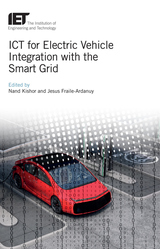
ICT for Electric Vehicle Integration with the Smart Grid
Nand Kishor
The Institution of Engineering and Technology, 2020
Electric vehicles (EVs) offer a cleaner mode of personal transportation and a new way to store energy, but also present challenges to the grid due to additional distributed storage and load. With rising numbers of EVs on the streets, problems can include voltage limits violation or line congestion, mainly at the distribution level. All those operating devices in the grid, from network operators/managers to EVs owners, need fast communication with low latency, high security and reliability. The book addresses EVs as a driving source for realizing smart grid operation. It provides chapters from multidisciplinary academic and industry communities related to EVs charging schemes and technologies, and its associated communication, networking and information architectures.
[more]
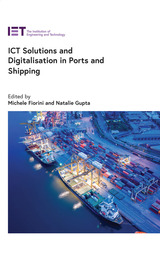
ICT Solutions and Digitalisation in Ports and Shipping
Michele Fiorini
The Institution of Engineering and Technology, 2021
Given the volumes of global ship traffic, solutions are needed to reduce waiting times, costs, energy consumption and emissions. This systematic reference on ICT solutions and digitalisation in the ports and shipping sector covers new and existing technologies, different types of digital systems, and offers illustrative examples and case studies.
[more]
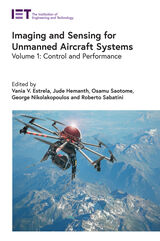
Imaging and Sensing for Unmanned Aircraft Systems
Control and Performance, Volume 1
Vania V. Estrela
The Institution of Engineering and Technology, 2020
This two-volume book set explores how sensors and computer vision technologies are used for the navigation, control, stability, reliability, guidance, fault detection, self-maintenance, strategic re-planning and reconfiguration of unmanned aircraft systems (UAS).
[more]
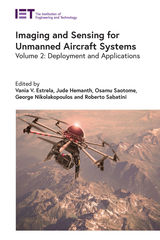
Imaging and Sensing for Unmanned Aircraft Systems
Deployment and Applications, Volume 2
Vania V. Estrela
The Institution of Engineering and Technology, 2020
This two-volume book set explores how sensors and computer vision technologies are used for the navigation, control, stability, reliability, guidance, fault detection, self-maintenance, strategic re-planning and reconfiguration of unmanned aircraft systems (UAS).
[more]
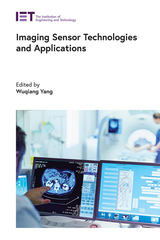
Imaging Sensor Technologies and Applications
Wuqiang Yang
The Institution of Engineering and Technology, 2020
Imaging sensors are crucial for electronic imaging systems, including digital cameras, camera modules, medical imaging equipment, night vision equipment, radar and sonar, drones, and many others. This contributed book covers a wide range of frequency, sensing modalities and applications, including x-ray beam imaging sensors, optical scattering sensors, smart visual sensors in robotic systems, tuneable diode Laser absorption spectroscopy (TDLAS) sensors, light detection and ranging (LiDAR) sensors, microwave imaging sensors, electro-magnetic imaging with ultra-wideband (UWB) sensors, synthetic aperture radar (SAR), electrical resistance tomography (ERT) sensors, electrical tomography for medical applications, electro-magnetic tomography (EMT) sensors, micro sensors for cell and blood imaging, and ultrasound imaging sensors.
[more]
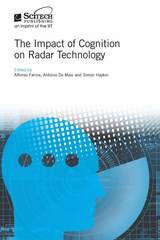
The Impact of Cognition on Radar Technology
Alfonso Farina
The Institution of Engineering and Technology, 2018
Cognitive dynamic systems are inspired by the computational capability of the brain and the viewpoint that cognition is a supreme form of computation. The key idea behind this new paradigm is to mimic the human brain as well as that of other mammals with echolocation capabilities which continuously learn and react to stimulations according to four basic processes: perception-action cycle, memory, attention, and intelligence.
[more]

Implementation of Self-tuning Controllers
K. Warwick
The Institution of Engineering and Technology, 1988
This text is an extremely useful guide for those wishing to investigate the application of self-tuning control systems. The contents have been chosen in order to restrict the amount of theoretical detail to that necessary for explanation purposes, whilst application examples and programming suggestions are highlighted. The overall text is suitable for those wishing to gain the flavour of adaptive control, although those already familiar with selftuning techniques will find the problem solutions discussed to be most attractive. Parameter estimation, numerical solutions and software aspects are all considered at length, while simplified procedures and predictive self-tuning schemes are shown in terms of fundamental concepts.
[more]
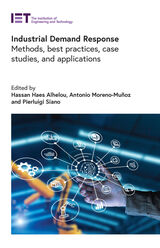
Industrial Demand Response
Methods, best practices, case studies, and applications
Hassan Haes Alhelou
The Institution of Engineering and Technology, 2022
Demand response (DR) describes controlled changes in the power consumption of an electric load to better match the power demand with the supply. This helps with increasing the share of intermittent renewables like solar and wind, thus ensuring use of the generated clean power and reducing the need for storage capacity.
[more]

Industrial Digital Control Systems
K. Warwick
The Institution of Engineering and Technology, 1988
This book provides an introduction to the techniques employed in the design and implementation of digital control systems. The text has arisen out of a highly successful IEE Vacation School held annually at Oxford University and the contents have been tailored to a digestible level and breadth by means of the feedback provided from previous School participants. As well as a tutorial approach to the description of basic concepts and general ideas used, most chapters include numerous worked examples and details of particular applications in order to enhance the theory introduced. The importance of putting over a technique by making use of practical examples is highlighted by the inclusion of several chapters in which selected case studies are presented detailing applications of both the more conventional and the more modern digital control ideas.
[more]

Industrial Microwave Heating
A.C. Metaxas
The Institution of Engineering and Technology, 1988
This book offers a broad coverage of the theory and practice of industrial microwave heating. It introduces the physical processes behind dipolar and conductivity loss mechanisms and follows with a thorough presentation of dielectric property data of many industrial materials as a function of the moisture content, temperature and frequency, focussing on the interpretation of such data as regards the suitabiliy for processing these materials with microwave energy. The basic equations which govern the power dissipation, attenuation, phase constant, penetration depth and skin depth are derived from first principles while the transport equations of heat, mass and pressure are qualitatively described, giving particular emphasis to the physical mechanisms behind high frequency drying. The book provides established procedures backed by theoretical formulations for the design of industrial travelling wave and multimode applicators. It also provides extensive coverage of single mode fundamental or higher order resonant cavities and outlines a number of atypical applicator structures. It describes the essential features of processing with microwaves under vacuum and presents a brief introduction to the mechanisms which lead to gas breakdown. It stresses the need for a degree of hybridisation with other electrical or conventional heating systems and discusses a few such schemes. The book outlines a number of systems for limiting leakage from on-line industrial microwave systems and concludes with an extensive discussion of successful industrial applications.
[more]
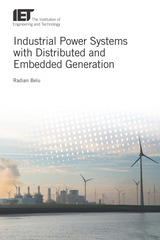
Industrial Power Systems with Distributed and Embedded Generation
Radian Belu
The Institution of Engineering and Technology, 2019
Energy for today's complex electrical power systems is increasingly being generated and distributed locally using small-scale, renewable energy sources. The addition of renewables to the grid requires new tools and operation methods, both for suppliers and industrial consumers. This book describes the supporting technologies that can turn conventional passive electricity delivery networks into the active networks of the future, with a focus on electricity utilization in the industrial environment. It examines the integration of the new, dispersed sources with the legacy systems of centralised generation, as well as how the new technologies can operate effectively in isolated systems. Industrial power distribution, lighting, motor control and protection are discussed in detail.
[more]

Industrial Software Technology
R.J. Mitchell
The Institution of Engineering and Technology, 1987
A number of interrelated developments are changing the nature of software technology. Developments in hardware are putting greatly increased power at the disposal of the software technologist. Advances in formal methods are providing the means to bring greater precision into the early stages of system development. Techniques such as expert systems are being brought into the domain of software technology as a result of advances in the application of artificial intelligence research. Developments in paradigms of system development are giving the software technologist better models of system structure and better tools and techniques for creating large systems, and greater political recognition of the importance of information technology is resulting in increased funding for research and development in software technology.
[more]
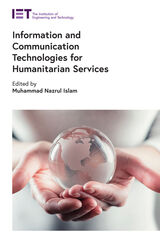
Information and Communication Technologies for Humanitarian Services
Muhammad Nazrul Islam
The Institution of Engineering and Technology, 2020
Humanitarian services seek to promote welfare to save lives, maintain human dignity, alleviate suffering, strengthen preparedness, and provide material and logistical assistance in response to humanitarian crises. They are thus different from development aids that address underlying socioeconomic factors and provides support for the social, economic and political developments of developing nations. Information and Communication Technologies (ICTs) are becoming the backbone technologies for providing quality and efficient services and are playing an increasingly important and sophisticated role in humanitarian-service activities. Many ICT-based solutions exist such as tools to support the work of humanitarian organizations, mobile applications and solutions to provide health services, open source web portals for disaster management systems, and mobile and autonomous devices to provide assistance.
[more]
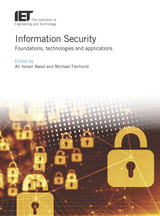
Information Security
Foundations, technologies and applications
Ali Ismail Awad
The Institution of Engineering and Technology, 2018
The rapid advancements in telecommunications, computing hardware and software, and data encryption, and the widespread use of electronic data processing and electronic business conducted through the Internet have led to a strong increase in information security threats. The latest advances in information security have increased practical deployments and scalability across a wide range of applications to better secure and protect our information systems and the information stored, processed and transmitted. This book outlines key emerging trends in information security from the foundations and technologies in biometrics, cybersecurity, and big data security to applications in hardware and embedded systems security, computer forensics, the Internet of Things security, and network security.
[more]

Innovation and the Communications Revolution
From the Victorian pioneers to broadband Internet
John Bray
The Institution of Engineering and Technology, 2002
This book describes the stage-by-stage creation and development, from the mid-nineteenth century to the present day, of the remarkable global communications technologies that have profoundly transformed the way that people live and work.
[more]
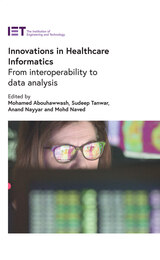
Innovations in Healthcare Informatics
From interoperability to data analysis
Mohamed Abouhawwash
The Institution of Engineering and Technology, 2023
Improved computing technology combined with IoT-enabled smart devices and the digitization of personal health records (PHRs) has created vast quantities of patient data in recent years. The availability of this data and new processing methods are enabling clinicians to provide better care for patients and has sparked a growing interest in consumer health informatics (CHI) and in the potential of patient-generated health data (PGHD).
[more]

Insulators for High Voltages
J.S.T. Looms
The Institution of Engineering and Technology, 1988
This book is a guide to the whole field of high voltage insulators as used in electrical power networks, traction and production. It covers the historical development of the shapes - sometimes strange ones - of modern types, decribes the principal materials - both ceramic and polymeric - and their fabrication, explains the physical principles of contamination and flashover, and reviews the mass of data on research and testing.
[more]
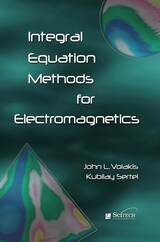
Integral Equation Methods for Electromagnetics
John L. Volakis
The Institution of Engineering and Technology, 2012
This text/reference is a detailed look at the development and use of integral equation methods for electromagnetic analysis, specifically for antennas and radar scattering. Developers and practitioners will appreciate the broad-based approach to understanding and utilizing integral equation methods and the unique coverage of historical developments that led to the current state-of-the-art. In contrast to existing books, Integral Equation Methods for Electromagnetics lays the groundwork in the initial chapters so students and basic users can solve simple problems and work their way up to the most advanced and current solutions.
[more]

Integral Equations for Real-Life Multiscale Electromagnetic Problems
Francesca Vipiana
The Institution of Engineering and Technology, 2024
Integral Equations for Real-Life Multiscale Electromagnetic Problems brings together and explains the main available approaches for the numerical solution of surface integral equations that can be used to analyse real-world multi-scale electromagnetic problems. In computational electromagnetics, formulations based on surface integral equations are currently the most commonly-used option for the analysis of electrically large and complex structures, but it is essential to have available state-of-the-art techniques to solve them in an efficient and accurate way.
[more]
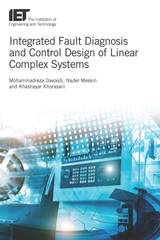
Integrated Fault Diagnosis and Control Design of Linear Complex Systems
Mohammadreza Davoodi
The Institution of Engineering and Technology, 2018
As control systems become more complex and are expected to perform tasks in unknown and extreme environments, they may be subject to various types of faults in their sensors, actuators or other components. It is crucial to be able to diagnose the occurrence of faults and to repair them in order to maintain, guarantee, and improve the overall safety, reliability, and performance of the systems. This book addresses the design challenges of developing and implementing novel integrated fault diagnosis and control technologies for complex linear systems.
[more]
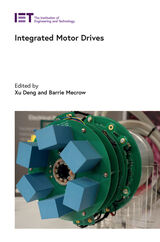
Integrated Motor Drives
Xu Deng
The Institution of Engineering and Technology, 2022
To optimise the efficiency of electric drives it is necessary to consider the components; the power electronic converter, the electric machine and the gearbox, together. Integrated systems can be smaller and have better flexibility and thermal management. Integrated motor drives (IMDs) specifically offer advantages including lower cost of installation and higher power density. This integration concept has been adopted in various electrical machine drive systems as well as electric vehicles.
[more]
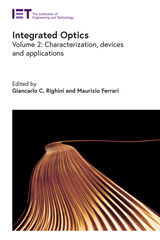
Integrated Optics
Characterization, devices, and applications, Volume 2
Giancarlo C. Righini
The Institution of Engineering and Technology, 2021
Edited by two recognised experts, this book in two volumes provides a comprehensive overview of integrated optics, from modelling to fabrication, materials to integration platforms, and characterization techniques to applications. The technology is explored in detail, and set in a broad context that addresses a range of current and potential future research and development trends.
[more]

Integrated Optics
From fundamentals to recent advances
Giancarlo Righini
The Institution of Engineering and Technology, 2020
Edited by two recognised experts, this book provides a comprehensive overview of integrated optics, from modelling to fabrication, materials to integration platforms, and characterization techniques to applications. The technology is explored in detail, and set in a broad context that addresses a range of current and potential future research and development trends.
[more]
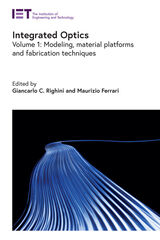
Integrated Optics
Modeling, material platforms and fabrication techniques, Volume 1
Giancarlo C. Righini
The Institution of Engineering and Technology, 2021
Edited by two recognised experts, this book in two volumes provides a comprehensive overview of integrated optics, from modelling to fabrication, materials to integration platforms, and characterization techniques to applications. The technology is explored in detail, and set in a broad context that addresses a range of current and potential future research and development trends.
[more]

Intellectual Property Rights for Engineers
Vivien Irish
The Institution of Engineering and Technology, 2005
This fully revised and updated edition of Intellectual Property Rights for Engineers addresses recent developments in the area. The book explains the general principles behind the law protecting innovation, quoting cases from the engineering domain in order to clarify legal issues. Chapters outline the basic rights through automatic protection (copyright, design right) and registration systems (patent, registered design, trade mark), and also discusses the issues surrounding confidential information. The book clarifies precisely who owns the rights and how their use is constrained by EC law, and goes on to explain how to license or even litigate when necessary. Finally, strategic aspects for decision-making and management are discussed.
[more]
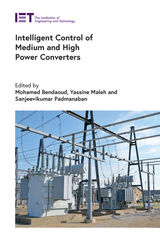
Intelligent Control of Medium and High Power Converters
Mohamed Bendaoud
The Institution of Engineering and Technology, 2023
The growing share of renewable energies, as well as the rising demand for electricity for transport and heating, are increasing the importance of power converters and the requirements for reliability and control. Intelligent control can increase converter efficiency, reducing size and weight. The application of intelligent control techniques to power converters has therefore recently become a focus of research.
[more]
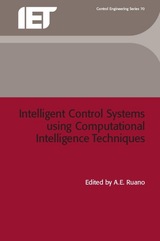
Intelligent Control Systems using Computational Intelligence Techniques
A.E. Ruano
The Institution of Engineering and Technology, 2005
Intelligent Control techniques are becoming important tools in both academia and industry. Methodologies developed in the field of soft-computing, such as neural networks, fuzzy systems and evolutionary computation, can lead to accommodation of more complex processes, improved performance and considerable time savings and cost reductions. Intelligent Control Systems using Computational Intellingence Techniques details the application of these tools to the field of control systems. Each chapter gives and overview of current approaches in the topic covered, with a set of the most important references in the field, and then details the author's approach, examining both the theory and practical applications.
[more]
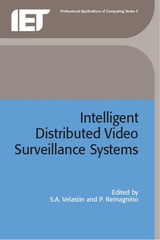
Intelligent Distributed Video Surveillance Systems
Sergio A. Velastin
The Institution of Engineering and Technology, 2006
There is a growing interest in the development and deployment of surveillance systems in public and private locations. Conventional approaches rely on the installation of wide area CCTV (Closed Circuit Television), but the explosion in the numbers of cameras that have to be monitored, the increasing costs of providing monitoring personnel and the limitations that humans have to maintain sustained levels of concentration severely limit the effectiveness of these systems. Advances in information and communication technologies, such as computer vision for face recognition and human behaviour analysis, digital annotation and storage of video, transmission of video/audio streams over wired and wireless networks, can potentially provide significant improvements in this field.
[more]
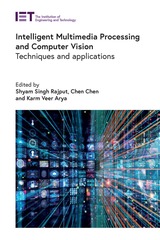
Intelligent Multimedia Processing and Computer Vision
Techniques and applications
Shyam Singh Rajput
The Institution of Engineering and Technology, 2023
Intelligent multimedia involves the computer processing and understanding of perceptual input from speech, text, videos and images. Reacting to these inputs is complex and involves research from engineering, computer science and cognitive science. Intelligent multimedia processing deals with the analysis of images and videos to extract useful information for numerous applications including medical imaging, robotics, remote sensing, autonomous driving, AR/VR, law enforcement, biometrics, multimedia enhancement and reconstruction, agriculture, and security. Intelligent multimedia processing and computer vision have seen an upsurge over the last few years. With the increasing use of intelligent multimedia processing techniques in various sectors, the requirement for fast and reliable techniques to analyse and process multimedia content is increasing day by day.
[more]
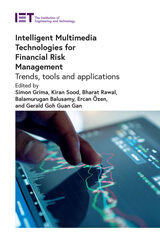
Intelligent Multimedia Technologies for Financial Risk Management
Trends, tools and applications
Simon Grima
The Institution of Engineering and Technology, 2023
Multimedia technologies have opened up a wide range of applications by combining a variety of information sources such as voice, graphics, animation, images, audio, and full-motion video which can be successfully implemented in banking, financial services and insurance (BFSI) industries to support their activities and strategic goals.
[more]
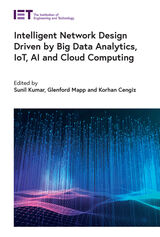
Intelligent Network Design Driven by Big Data Analytics, IoT, AI and Cloud Computing
Sunil Kumar
The Institution of Engineering and Technology, 2022
As enterprise access networks evolve with a larger number of mobile users, a wide range of devices and new cloud-based applications, managing user performance on an end-to-end basis has become rather challenging. Recent advances in big data network analytics combined with AI and cloud computing are being leveraged to tackle this growing problem. AI is becoming further integrated with software that manage networks, storage, and can compute.
[more]

Intelligent Networks
Principles and applications
John Anderson
The Institution of Engineering and Technology, 2002
This book explains how intelligence can be introduced into digital telephone networks. Beginning by outlining the basic principles of Intelligent Networks (IN), it tracks the application of the IN principle of separation of the service logic for advanced telephony services from the underlying call control infrastructures. The book explains how large public networks are updated to incorporate IN principles for advanced telephony services. This is illustrated using many practical examples which are set against a background of following the ETSI standards within the overall ITU-T framework of recommendations. This book is targeted at postgraduate telecommunications students, or engineers requiring a concise and practical introduction to IN.
[more]
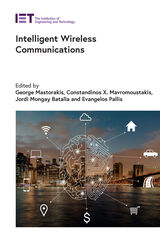
Intelligent Wireless Communications
George Mastorakis
The Institution of Engineering and Technology, 2021
The incredible growth in the development and use of wireless communication technologies has led to research in both academia and industry on artificial intelligence (AI) methods that enable intelligent technologies, smarter services and applications, business processes and social interactions to satisfy future requirements. AI mechanisms are being exploited in smart intelligent network applications to provide insights from collected data by identifying patterns and allowing operational predictions with higher accuracy in smaller time periods. The future of AI-powered wireless networking infrastructures depends on finding effective solutions to a number of technical challenges that such paradigms introduce, including better intelligent sensor capabilities, smarter big data analytics, automated remote data management, as well as open and secure processes.
[more]
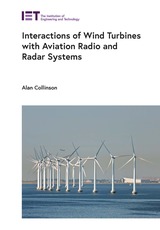
Interactions of Wind Turbines with Aviation Radio and Radar Systems
Alan Collinson
The Institution of Engineering and Technology, 2024
Wind farms and wind turbines are strong reflectors of radio waves, which can affect radar and radio systems used by civil and military aviation. The speeds of turbine blades and aircraft are comparable, and it can be difficult to discriminate between them using existing radar systems. Wind turbines may also affect communications, navigation and instrument landing systems. This situation is a brake to wind farm development slowing or stopping exploitation of many giga watts of wind capacity in many countries. Therefore, developing approaches and technologies for the mitigation of the impacts of wind farms on aviation systems is of great importance. These technologies have the potential to increase renewable energy generation and promote energy independence but, and this is critically important, they must do so without compromising safety or national defense.
[more]
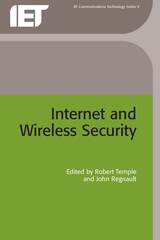
Internet and Wireless Security
Robert Temple
The Institution of Engineering and Technology, 2002
Many organisations are transforming their businesses through the development of information and communications technologies. The security of this e-commerce is now a key enabler for businesses, and this book presents an overview of current and future infrastructures for e-business security.
[more]

The Internet of Medical Things
Enabling technologies and emerging applications
Subhendu Kumar Pani
The Institution of Engineering and Technology, 2022
The Internet of Medical Things (IoMT) allows clinicians to monitor patients remotely via a network of wearable or implantable devices. The devices are embedded with software or sensors to enable them to send and receive data via the internet so that healthcare professionals can monitor health data such as vital statistics, metabolic rates or drug delivery regimens, and can provide advice or treatment plans based on this real-world, real-time data. This edited book discusses key IoT technologies that facilitate and enhance this process, such as computer algorithms, network architecture, wireless communications, and network security.
[more]
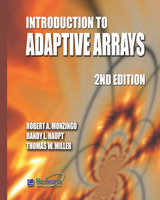
Introduction to Adaptive Arrays
Robert A. Monzingo
The Institution of Engineering and Technology, 2011
This second edition is an extensive modernization of the bestselling introduction to the subject of adaptive array sensor systems. With the number of applications of adaptive array sensor systems growing each year, this look at the principles and fundamental techniques that are critical to these systems is more important than ever before.
[more]
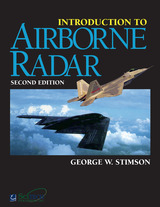
Introduction to Airborne Radar
Geroge W. Stimson
The Institution of Engineering and Technology, 1998
Introduction to Airborne Radar is the revision of the classic book privately published by Hughes Aircraft Company in 1983. Lavishly produced in full color, the book was quite unlike any commercially published radar book produced by the major technical publishers. The combination of clear, understandable writing and the unparalleled illustrations established the text-reference as a 'must-have' for engineers, technicians, pilots, and even sales and marketing people within the radar and aerospace industry. The book was authored by veteran Hughes engineer and Technical Manager George W. Stimson, a publications specialist. Individual chapters were thoroughly reviewed by the appropriate experts within the Hughes Radar Systems Group. The book was initially available 1983-1987 only to those within the Hughes family: employees and customers, primarily the military. Restriction was lifted in 1987. Hughes went through three printings and 40,000 copies 1983-1993, mostly by word-of-mouth testimonials and demand. Upon retirement from Hughes, George Stimson successfully negotiated for the rights to the book and made an agreement with SciTech Publishing to do a major revision of the text to update it. The resulting Second Edition has been overwhelmingly positive and a best-seller. Second Edition The revision is extensive: thirteen entirely new chapters cover the technological advances over the fifteen years since publication, two chapters considered obsolete have been deleted entirely, three chapters are extensively rewritten and updated, two chapters have been given new sections, and fourteen chapters have been given minor tweaks, corrections, and polishing. The book has grown from 32 chapters to 44 chapters in 584 efficiently-designed pages. Efforts have been made to bring more even-handed coverage to radars developed outside of Hughes Aircraft, while older and less important Hughes radars have been deleted or abbreviated. Chapter 44 catalogs many of the cutting edge radars in functioning aircraft and near-service aircraft in early stages of production. The book's appeal is to a diverse audience: from military pilots and radar officers eager to gain a sound technical understanding of the complex systems that their lives depend upon, on up through technicians, marketing, and sales people, to the radar system design specialists, who may 'know all that stuff' but who deeply admire the expression and thus use the book to teach others who have questions. The market encompasses companies directly involved in the radar business and those on the periphery, college professors of engineering and physics themselves, along with students in aviation, aeronautics, and electromagnetics and radar courses. The cross-disciplinary and multi-level demand for the book shows that the book should not be pigeon-holed as just a radar book for electrical engineers. Virtually anybody with a knowledge of high school algebra, trigonometry, and physics will be able to read and absorb most of the material.
[more]
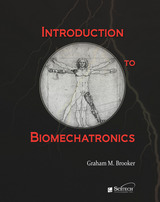
Introduction to Biomechatronics
Graham M. Brooker
The Institution of Engineering and Technology, 2012
This is the age of biomechatronics, a time where mechanics and electronics can interact with human muscle, skeleton, and nervous systems to assist or replace limbs, senses, and even organs damaged by trauma, birth defects, or disease. Introduction to Biomechatronics provides biomedical engineering students and professionals with the fundamental mechatronic (mechanics, electronics, robotics) engineering knowledge they need to analyze and design devices that improve lives. The first half of the book provides the engineering background to understand all the components of a biomechatronic system: the human subject, stimulus or actuation, transducers and sensors, signal conditioning elements, recording and display, and feedback elements. It also includes the major functional systems of the body to which biomechatronics can be applied including: biochemical, nervous, cardiovascular, respiratory, and musculoskeletal. The second half discusses five broadly based inventions from a historical perspective and supported by the relevant technical detail and engineering analysis. It begins with the development of hearing prostheses including middle-ear implantable hearing devices and the amazingly successful cochlear implant. This is followed by sensory substitution and visual prostheses that researchers hope will do the same for the blind as the cochlear implant has done for the deaf. The last three chapters are more mechatronic in focus, examining artificial hearts, respiratory aids from the iron lung to the latest CPAP devices, and finally artificial limbs from the first hooks and peg legs to limbs that move and have a sense of touch.
[more]
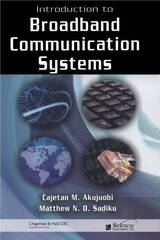
Introduction to Broadband Communication Systems
Cajetan M. Akujuobi
The Institution of Engineering and Technology, 2008
Broadband networks, such as asynchronous transfer mode (ATM), frame relay, and leased lines, allow us to easily access multimedia services (data, voice, and video) in one package. Exploring why broadband networks are important in modern-day telecommunications, Introduction to Broadband Communication Systems covers the concepts and components of both standard and emerging broadband communication network systems.
[more]
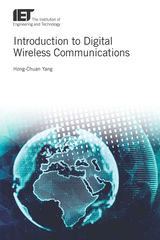
Introduction to Digital Wireless Communications
Hong-Chuan Yang
The Institution of Engineering and Technology, 2017
This book provides an efficient introduction to fundamental and advanced digital transmission technologies in current and future wireless communication systems. The objective is to help students and engineers quickly grasp the operating principles and design trade-offs of various wireless transmission technologies, which will enable them to carry out product development or perform academic research in the field.
[more]
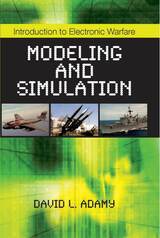
Introduction to Electronic Warfare Modeling and Simulation
David L. Adamy
The Institution of Engineering and Technology, 2006
This unique book covers the whole field of electronic warfare modeling and simulation at a systems level, including chapters that describe basic electronic warfare (EW) concepts. Written by a well-known expert in the field with more than 24 years of experience, the book explores EW applications and techniques and the radio frequency spectrum, with primary emphasis on HF (high frequency) to microwave. A detailed resource for entry-level engineering personnel in EW, military personnel with no radio or communications engineering background, technicians and software professionals, the work helps you understand the basic concepts required for modeling and simulation, as well as fidelity and other practical aspects of simulation design and application. You get clear explanations of important mathematical concepts, such as decibel notation and spherical trigonometry. This informative reference explains how to facilitate the generation of realistic computer models of EW equipment. Moreover, it describes specific types of EW equipment, how they work and how each is mathematically modeled. The book concludes with a description of the various types of models and simulations and the ways they are applied to training and equipment testing tasks.
[more]
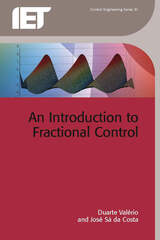
An Introduction to Fractional Control
Duarte Valério
The Institution of Engineering and Technology, 2012
Fractional control techniques provide an effective way to control dynamic behaviours, using fractional differential equations. This can include the control of fractional plants, the control of a plant using a fractional controller, or the control of a plant so that the controlled system will have a fractional behaviour to achieve a performance that would otherwise be hard to come by.
[more]
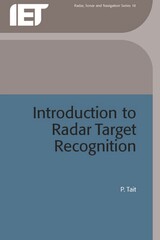
Introduction to Radar Target Recognition
P. Tait
The Institution of Engineering and Technology, 2006
This book text provides an overview of the radar target recognition process and covers the key techniques being developed for operational systems. It is based on the fundamental scientific principles of high resolution radar, and explains how the underlying techniques can be used in real systems, taking into account the characteristics of practical radar system designs and component limitations. It also addresses operational aspects, such as how high resolution modes would fit in with other functions such as detection and tracking.
[more]
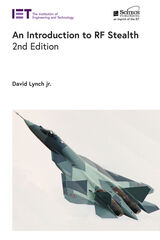
An Introduction to RF Stealth
David Lynch Jr.
The Institution of Engineering and Technology, 2021
This expanded, revised and updated new edition of Introduction to RF Stealth covers two major topics: Low Observables and Low Probability of Intercept (LO and LPI) of radars and data links, collectively sometimes called Stealth. Each chapter includes examples, student exercises and references. Worked simulations are available that illustrate the techniques described.
[more]

Introduction to RF Stealth
David L. Lynch Jr.
The Institution of Engineering and Technology, 2004
This is the only book focused on the complete aspects of RF Stealth design. It is the first book to present and explain first order methods for the design of active and passive stealth properties. Everything from Electronic Order of Battle to key component design is covered.
[more]

An Introduction to Satellite Communications
D.I. Dalgleish
The Institution of Engineering and Technology, 1989
The aim of this book is to give a clear and concise exposition of the principles and practice of satellite communications by describing the development of communications-satellite services. It will be useful both to engineers who have worked in other fields of telecommunication and to students.
[more]
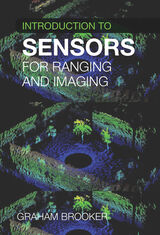
Introduction to Sensors for Ranging and Imaging
Graham Brooker
The Institution of Engineering and Technology, 2009
This is a comprehensive textbook and reference that provides a solid background in active sensing technology. Beginning with a historical overview and an introductory section on signal generation, filtering and modulation, it follows with a section on radiometry (infrared and microwave) as a background to the active sensing process. The core of the book is concerned with active sensing, starting with the basics of time-of-flight sensors (operational principles, components), and goes through the derivation of the radar range equation, and the detection of echo signals, both fundamental to the understanding of radar, sonar and lidar imaging. Several chapters cover signal propagation of both electromagnetic and acoustic energy, target characteristics, stealth and clutter. The remainder of the book involves the basics of the range measurement process, active imaging with an emphasis on noise and linear frequency modulation techniques, Doppler processing, and target tracking.
[more]
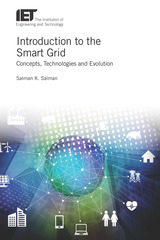
Introduction to the Smart Grid
Concepts, technologies and evolution
Salman K. Salman
The Institution of Engineering and Technology, 2017
In recent years it has become increasingly apparent that conventional electrical networks cannot meet the requirements of the 21st century. These include reliability, efficiency, liberalisation of electricity markets, as well as effective and seamless integration of various types of renewable energy sources, electric vehicles, and customers as players. The emergence of new technologies such as distributed control, monitoring devices, and tremendous advances in information and communication technology have paved the way to realize the Smart Grid concept.
[more]
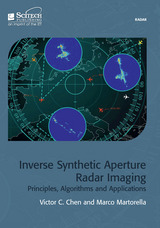
Inverse Synthetic Aperture Radar Imaging
Principles, algorithms and applications
Victor C. Chen
The Institution of Engineering and Technology, 2014
Based on the authors' 20 years' research work on Inverse Synthetic Aperture Radar (ISAR) imaging of moving targets and non-cooperative target recognition, this book provides readers with knowledge of various algorithms of ISAR imaging of targets and implementation with MATLAB. It introduces basic principles of radar backscattering, radar imaging, and signal analysis. It describes the characteristics of radar returns from targets, how to produce well-focused ISAR images of moving targets, and what features that can extracted from ISAR images. Also introduced are several important algorithms for ISAR image formation, ISAR image auto-focusing, and applications of ISAR imaging to air targets, sea vessels and ground moving targets. Examples of ISAR imaging of ground moving targets, air targets, and sea vessels are discussed in detail.
[more]
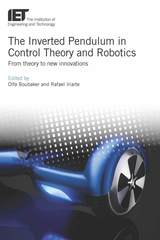
The Inverted Pendulum in Control Theory and Robotics
From theory to new innovations
Olfa Boubaker
The Institution of Engineering and Technology, 2018
The inverted pendulum is a classic problem in dynamics and control theory and is widely used as a benchmark for testing control algorithms. It is also an area of active study, with many new innovations and applications - for example the problem is solved in the technology of the Segway, a self-balancing transportation device.
[more]

Ionospheric Radio
Kenneth Davies
The Institution of Engineering and Technology, 1990
Ionospheric Radio replaces an earlier publication Ionospheric Propogation and is aimed at professional scientists, engineers, and students who need an intermediate-level reference and/or text. Students of aeronomy and radio wave propogation are introduced to basic wave theory in absorbing, anisotropic and dispersive media, and to the physics of production, loss and movement of plasma in the ionosphere in the presence of the geomagnetic field. Various radio techniques are described, and applications to the interpretation of ionospheric structures and dynamics are presented. The application of ionospheric data to radio communications problems includes the use of numerical and physical models and prediction techniques, and methods for calculating signal strengths are presented. Topics include Earth-space propagation, ionospheric modification, ionospheric disturbances, propagation by scattering from plasma irregularities, topside sounding, and propagation on frequencies from the extremely low to the super high. Reference lists are extensive and a section of questions tests the reader's understanding of the material.
[more]
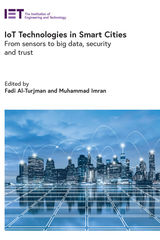
IoT Technologies in Smart-Cities
From sensors to big data, security and trust
Fadi Al-Turjman
The Institution of Engineering and Technology, 2020
Smart City and sensing platforms are considered some of the most significant topics in the Internet of Things (IoT). Sensors are at the heart of the IoT, and their development is a key issue if such concepts are to achieve their full potential.
[more]
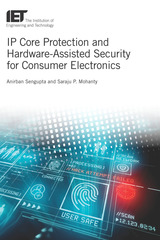
IP Core Protection and Hardware-Assisted Security for Consumer Electronics
Anirban Sengupta
The Institution of Engineering and Technology, 2019
IP Core Protection and Hardware-Assisted Security for Consumer Electronics presents established and novel solutions for security and protection problems related to IP cores (especially those based on DSP/multimedia applications) in consumer electronics. The topic is important to researchers in various areas of specialization, encompassing overlapping topics such as EDA-CAD, hardware design security, VLSI design, IP core protection, optimization using evolutionary computing, system-on-chip design and application specific processor/hardware accelerator design.
[more]
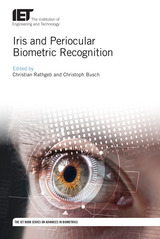
Iris and Periocular Biometric Recognition
Christian Rathgeb
The Institution of Engineering and Technology, 2017
Iris recognition technologies for identity management are already deployed globally in several large-scale nationwide biometric projects and are currently entering the mobile market. More recently, periocular recognition has been employed to augment the biometric performance of the iris in unconstrained environments where only the ocular region is present in the image.
[more]

ISDN Applications in Education and Training
Robin Mason
The Institution of Engineering and Technology, 1994
ISDN presents a new challenge for educators and trainers. This book provides an introduction to the technology for educators interested firstly in whether to use it and secondly in how to use it. The first three chapters discuss practical, educational and strategic issues related to these two questions. The following ten chapters provide case studies of education and training uses of ISDN technologies in Europe, the US and Australia. These involve videoconferencing, audiographics, desktop conferencing and image banks. The book concludes with a large glossary of explanatory material.
[more]

ITS for Freight Logistics
Hironao Kawashima
The Institution of Engineering and Technology, 2022
The global economy requires globalized movement of goods. Freight transport operations need to be efficient, productive, safe and secure, clean and green. The use of ICT and ITS (intelligent transport systems) are addressing these challenges by developing more rapid, more reliable and more precisely timed strategies for freight transport.
[more]
READERS
Browse our collection.
PUBLISHERS
See BiblioVault's publisher services.
STUDENT SERVICES
Files for college accessibility offices.
UChicago Accessibility Resources
home | accessibility | search | about | contact us
BiblioVault ® 2001 - 2024
The University of Chicago Press









